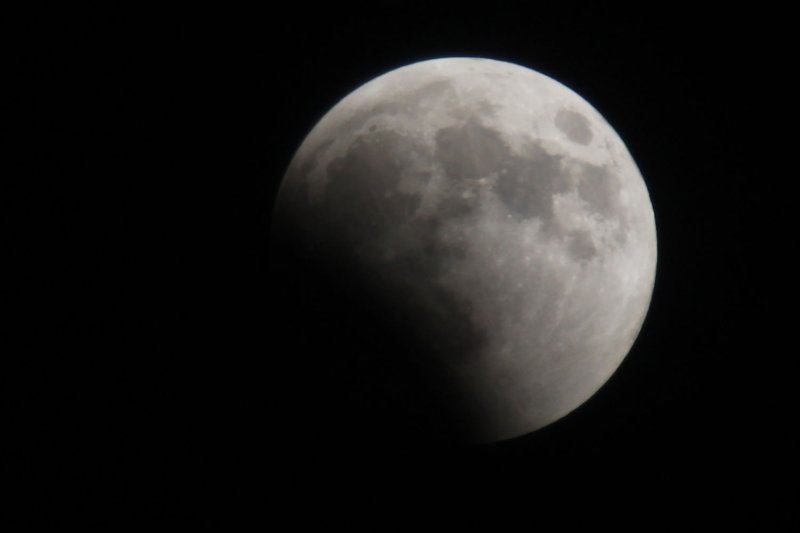1 of 4 | The moon begins to be absorbed by Earth's shadow during a total eclipse Friday. Photo by Ismael Mohamad/UPI |
License Photo
July 27 (UPI) -- This century's longest total lunar eclipse clocked in at 6 hours and 13 minutes Friday, with totality lasting more than 100 minutes.
While the blood red moon captivated viewers across the globe, daylight meant residents of the United States missed out on the event. In North America, only a sliver of eastern Canada and the eastern Caribbean were able to catch a glimpse of the moon in shadow.
As this NASA map showcased, most of the rest of the world got to witness the phenomenon. At what time of day the lunar eclipse appeared depended on where you live.
In Britain, for example, the lunar eclipse lasted throughout the evening, beginning when the moon rose at 8:50 p.m.
Unlike like a solar eclipse, it is entirely safe to look directly at a lunar eclipse, and Friday's eclipse offered sky-watchers more time than usual to look.
As NPR reported, NASA expected Friday's lunar eclipse to be the longest this century. During the event, the Earth, sun and moon were in a direct line
As Space.com explained, the eclipse's record length was the result the moon's positioning relative to Earth. Just before the lunar eclipse event, the moon reached its apogee, its farthest point from Earth. When the moon is farther away, it orbits Earth more slowly -- meaning it takes its time as it passes through Earth's shadow.
The moon also plotted a fairly long path across the Earth's disk-shaped shadow.
"The moon is passing very close to the center of Earth's shadow, so it is passing on a chord that almost equals the full diameter of the shadow," Steve Edberg, an astronomer who recently retired from the Jet Propulsion Laboratory, told the Los Angeles Times. "In other words, the moon is taking almost the longest possible path through Earth's shadow."
Lunar eclipse are sometimes referred to as blood moons as a result of the reddish-orange tint the face of the moon takes on as moves entirely into the shadow of Earth. The red hue is caused by rays of sunlight refracted by Earth's atmosphere. These red rays are always cast into the space behind Earth, but they are normally drowned out by the sun's direct light.















